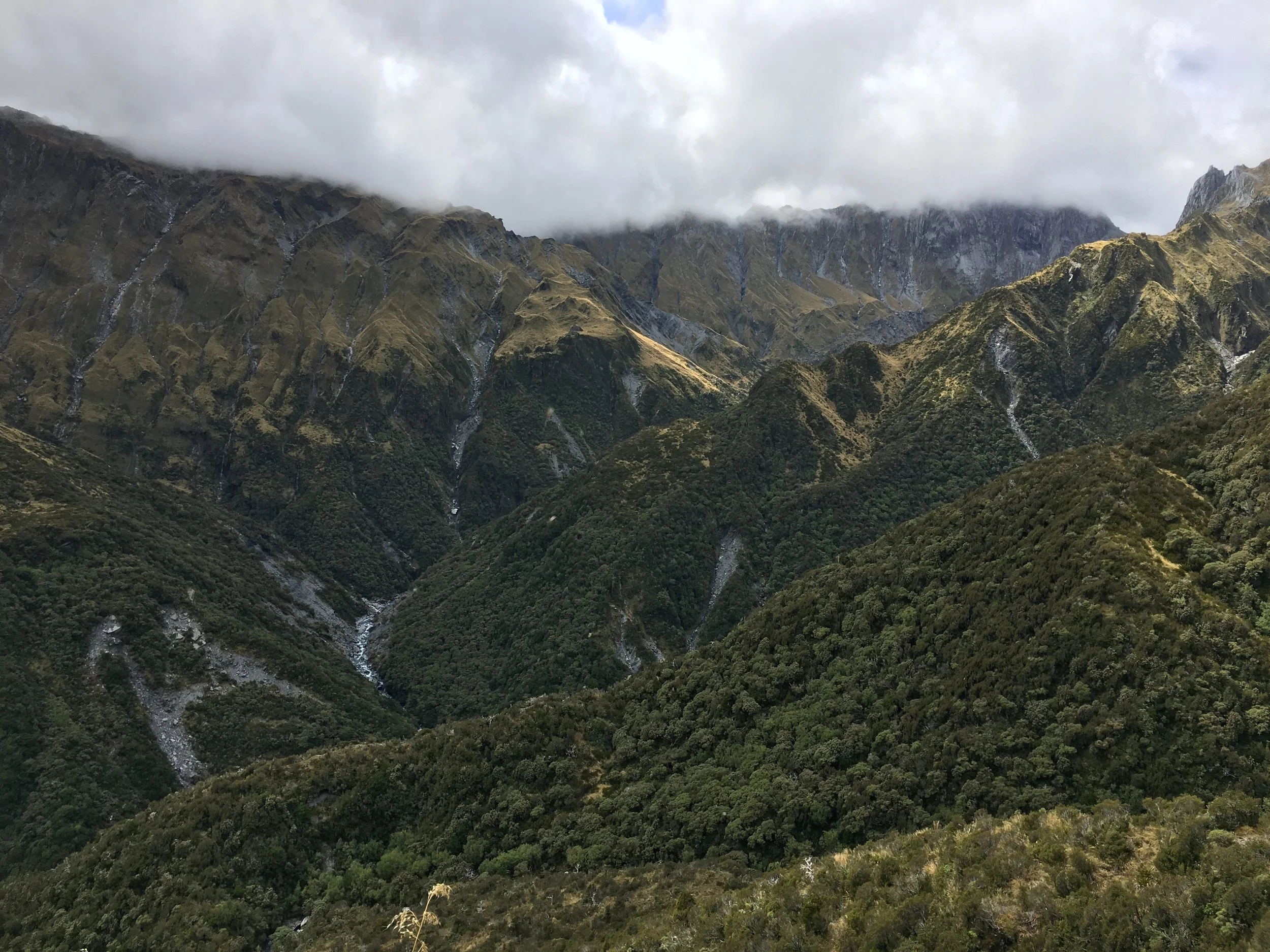On Sunday 14 April, Zero Invasive Predators (ZIP) completed the first phase of a predator removal operation that forms part of a wider research and development work programme in the 12,000 ha Perth River valley in South Westland. This is a significant milestone for the first large-scale trial of a promising technique for completely removing possums (and potentially rats) from large areas of rugged back-country. The technique, which has been successful in smaller-scale trials, has two phases, each of which comprises two applications of non-toxic “prefeed” bait and one of toxic bait containing 1080.
The complete and permanent removal of possums and, potentially, of rats (along with the sustained control of stoats) is expected to have significant benefits for many of the treasured native species that live in the Perth River valley, including kea, rock wren, rata, and whio. The healthy kea population in the valley is believed to be the result of the history of predator control in this area, which includes multiple 1080 predator control operations.
If successful, this research and development programme will demonstrate techniques that can be used to completely remove predators from large, remote, mainland areas – bringing us one small step closer to achieving the goal of a predator-free New Zealand.
Heavy rain fell in the valley over the past weekend, which is sufficient to start breaking down the baits and reduce their toxicity to low levels.
We will begin intensive searching for any surviving predators after the second (and final) phase of the predator removal operation is completed (in June, depending on the weather).
Kea and tahr were radio tagged in 2018, in order to monitor them through both phases of the predator removal operation. These animals are monitored using the Sky Ranger system, which consists of a radio receiver flown in a light plane to collect data from the radio transmitters.
On Saturday 13 April, during the initial stages of toxic baiting, we determined that 13 radio-tagged kea, and 14 radio-tagged tahr, were present in the operational area. Further rounds of Sky Ranger monitoring were carried out, on Tuesday 16, Thursday 18, and Monday 22 April.
All 14 tahr were found alive in the operational area during each round of post-toxin monitoring.
11 of the 13 kea were found alive in the operational area during the monitoring period. Two radio tags were found to have switched to ‘static’ mode on Tuesday 16 April, and on Friday 19 April a ranger recovered the radio tags and confirmed that the kea wearing them had died. The kea, one young female and one young male, have been sent to Wildbase at Massey University for an independent toxicology assessment, to confirm the cause of death.
It is well-known that the use of aerial 1080 poses a potential risk to kea when used in close proximity to sites where kea scrounge food from humans, such as occurs around Franz Josef glacier. With the assistance of kea experts at the Department of Conservation and Kea Conservation Trust, we undertook several measures to minimise this potential risk, including two new approaches (namely, using repellent bait to ‘train’ kea not to eat the toxin, and providing tahr carcasses to attract kea away from the operational area).
While two of the birds have died, 11 of the 13 radio-tagged birds are alive. This is particularly pleasing given that the increased number of prefeed applications and higher quantity of toxic bait used in the ZIP technique could pose an elevated risk to kea compared to a standard 1080 operation. The results indicate to us that the measures we implemented have helped to minimise the risk to kea, but we have yet to complete the work that will help to confirm whether or not this is the case.
Interestingly, one of the two kea was known to have high levels of lead in its blood, which experts have suggested may increase a bird’s susceptibility to 1080 poisoning. The other bird had not yet been tested for lead (but this will be done as part of the toxicology assessment).
For the ZIP team, the loss of these individual birds is disappointing. We spend a lot of time in the valley, often in the company of kea, as well as reviewing hundreds of hours of camera footage of them, so we are particularly fond of these birds and their antics. In that regard, it’s reassuring to know that the results of monitoring kea in other aerial predator control operations has shown that removing predators from the Perth River valley will result in improved breeding success for the kea population.
This predator removal operation is part of a wider programme of research and development that is intended to also prevent possums, and potentially rats, from re-invading the area so kea and other native species will continue to enjoy improved breeding success. DOC has confirmed that it will maintain the intensive stoat trapping network established by ZIP as part of the wider programme of work in the long term (to secure conservation outcomes).
We’re going to continue to do all we can to refine the new methods to completely remove introduced predators across large areas of the New Zealand mainland, and to prevent them from re-establishing there, in order to help reverse the decline of kea and other native species.
For more information, please email us at info@zip.org.nz.

